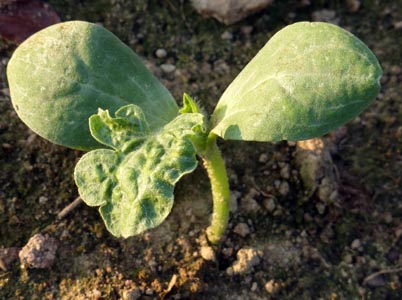Tomatoes aren’t the only stars of the backyard garden. Growing watermelons is just as rewarding. It’s also hard to resist all the beautiful varieties that you’d never find in a supermarket. However, watermelons can be trickier to grow than some other crops. Here are a few tips to help you grow watermelons this season.
Choosing a Variety
New gardeners, folks with small gardens, and those who live farther north may want to consider icebox melons or smaller melons with fewer days to harvest. Some great options include:
- Sugar Baby Watermelon
- Early Moonbeam Watermelon
- Blacktail Mountain Watermelon
- White Wonder Watermelon
Folks who’ve struggled with plant diseases in their garden should look at varieties with good disease resistance. Some options include:
- Chou Cheh Red Watermelon (Downy Mildew resistance)
- Crimson Sweet or Crimson Sweet Virginia Select (Anthracnose and Fusarium resistance)
- Yellow Fleshed Moon and Stars Watermelon (some tolerance to disease)
- Nancy Watermelon (Above-average disease resistance)
- Strawberry Watermelon (Very good disease resistance)
Preparing Your Garden
Watermelons tend to be fairly particular about the soil they’re grown in. It’s a good idea to start by adding a few inches of finished compost to your plot.
The soil for watermelons should be well-drained and have a pH between 6.0-6.8.

Planting
The key to giving your watermelons a good start is to ensure that the soil is warm enough. Wait to plant melons until the soil temperature is around 70°F, probably about two weeks after your last frost date.
It’s a good idea to plant watermelons in hills; they don’t do well in soggy soil. Space watermelons 12-18 in. apart in rows 6-8 ft. apart. Vines require anywhere from 36-100 sq. ft. of vine space per hill, depending on the variety.
Care
In order to get the best production, watermelons require good, consistent care.
- Don’t disturb vines while the fruit is ripening, or else fruit may ripen unevenly.
- Water consistently for good fruit production. Drip irrigation or soaker hoses are a great choice and can help prevent fungal diseases.
- Mulch around watermelon hills with hay or straw to keep melons off the ground.
- Keep up with weeds, especially before the vines start to sprawl.
- When your plants are flowering, give them a boost with compost tea or other liquid fertilizer like liquid kelp.
Harvesting Watermelons
Your watermelons are looking great, but how do you tell when they’re ready to harvest? There are four clues you can look for:
- The spot where the fruit touches the ground turns yellow.
- The curly little tendril on the portion of the vine nearest the fruit should be dried -up and brown.
- The rind feels slightly rough and ridged and has a dull, opaque appearance, whereas immature fruits are smoother and glossier.
- When a watermelon is ripe, it will have a hollow sound when you thump it with your knuckles: The melon sounds more like your chest when it is ripe; when green, it sounds more like your head; when over-ripe, it sounds more like your stomach. Mark Twain described it this way: “A ripe melon says ‘punk’ when thumped, a green one says ‘pink’ or ‘pank’.”
Put Your Watermelons to Good Use
Eating fresh watermelon is probably everyone’s favorite way of eating enjoying it, but there are some other ways to get the most of your watermelon.
- Watermelon seeds are edible, have a nutty taste, and are commonly sold as a snack in some parts of the world. Seeds that mature to black are easier to eat than white seeds.
- Watermelon rinds can be pickled and eaten throughout the winter.
- You can dehydrate watermelon into “watermelon candy,” freeze it for smoothies or try your hand at fermenting watermelon wine.

